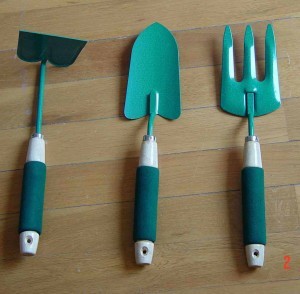We applied for the Vancouver Greenest City grant to develop a different type of community garden which you can read about here. We have kicked off the project with the “gold standard” in User Experience Design by conducting some good old-fashioned user research (building personas).
Here is the write-up about the project that we provided to the city:
As enthusiastic novice gardeners, we have found it frustrating using the trial and error method of finding plants that work in our limited garden spaces. Finding native and/or drought-resistant plants that thrive and are still aesthetically pleasing seems to be an even taller order as gardening literature or plant lists can only tell you so much. And lastly, finding a source — be it a retailer, trading or a neighbour’s seeds — is yet another hurdle. For the casual gardener without much time on their hands, too often the reality is making do with whatever you can find at a big box retailer, even if it means the plants are potentially covered in pesticides, of dubious origin, overly common or not compatible with our climate.
We dream of community gardens in the city that don’t just provide the name of the plant, but also conveniently tell you a bit more about it beyond what size to expect once it’s matured. Then not only can you see the plants in context and in all seasons (live and in the flesh!) but you’d have a living garden encyclopedia, relating interesting and relevant facts about each specimen such as what other plants compliment it well; what conditions will encourage it to thrive; how to propagate; if it’s edible (and how to prepare it); when it blooms etc. And perhaps the gardens could even invite you to harvest some seeds or leave a request for a division or cutting once it becomes too large.
Our vision is to create such a garden in a neighbourhood greenway, featuring several themes such as “water wise,” edibles, fruit trees and native plants. Each plant would have a small weather-resistant sign that provides its name and a brief summary, and then additionally a QR code: a barcode that can be scanned by most smartphones, providing access to online information and conversation about the plant. Passer-by’s could enjoy the plants by scanning the QR codes to learn more about them or to create electronic wish lists of plants. Themes (or even individual plants) could each be adopted by a neighborhood resident who could care for the plant and be the steward for its adoption.
The goals of this project are multi-fold:
1. Encourage smarter, resource-efficient plants by demonstrating the ease and beauty of growing plants that are well-suited to our climate, reducing the need for watering and chemicals.
2. Promote the adoption of growing your own food, including vegetable and fruit crops that also perform well in our climate.
3. Build community in the Cedar Cottage/Kensington area, specifically in a neighbourhood where most residents do not already know or interact with one another.
4. Beautify the neigbourhood. Greenways can be a gathering place and bring foot traffic and help reduce litter.
5. Create a bridge between cultures and ages. We’d ideally like to build a greenway where residents of many ethnicities and ages can enjoy and convene.
Should partnerships prove to be desireable, we could partner with neighborhood seed saving groups, community gardens, local greenhouses or seed companies (such as West Coast Seeds) so that the garden could function almost as a living showroom. We envision QR codes could facilitate bartering, swapping or facilitating ecommerce purchases.

